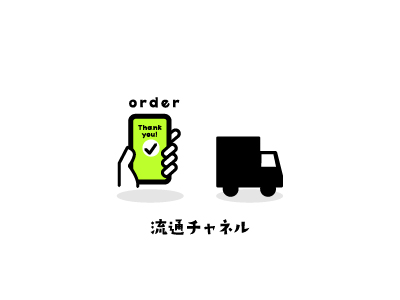“Channel strategy is a critical element for companies when introducing products or services to the market and delivering them to customers. A well-defined channel strategy directly impacts a company’s competitiveness and growth. This article provides an in-depth explanation of channel strategy, covering fundamental concepts to successful case studies.
Recommended Read: Understanding All Aspects of Marketing Strategy! Explaining Strategies and Techniques from the Ground Up
1. Fundamental Understanding of Channel Strategy
Overview of Channel Strategy
Channel strategy is a crucial component when companies introduce products or services to the market and deliver them to customers. This section provides an in-depth explanation of the basic concepts of channel strategy. It starts with understanding what channel strategy is and why it is important.
Channel strategy involves planning and managing the distribution path of products or services from producers to the final customers. It encompasses critical decisions in supplying products to the market and reaching customers. Many elements are involved, such as which channels to use, how to position products, and pricing strategies.
Role of Sales Channels in Marketing
Sales channels represent a significant element within marketing strategies. Choosing the right channels is directly linked to the success of products or services. Sales channels play a crucial role in taking products to the market and ultimately reaching customers. Furthermore, channels influence information dissemination and building relationships with customers.
Sales channels take various forms, including retail stores, online stores, intermediaries, one-stop shops, and direct sales. Channel strategy involves evaluating these options and finding the optimal combination.
2.Importance of Channel Strategy
Impact of Channel Strategy on Brand Growth
Channel strategy directly influences brand growth. A well-planned channel strategy enhances competitiveness in the market and improves brand awareness. For a brand to grow and succeed in the market, it’s necessary to offer appropriate products in suitable locations. Channel strategy aids in optimizing this process.
Effective implementation of channel strategy allows offering products that meet customer needs and maintaining a competitive edge. When entering the market, the channels chosen impact the brand’s image, visibility, and reliability, hence requiring careful selection.
Learning the Value of Channel Strategy from Success Cases
The most effective way to learn is through successful cases of companies or brands. Success cases demonstrate the effectiveness of channel strategy and provide insights into its implementation. Analyzing past success cases provides hints and insights to improve one’s channel strategy.
For instance, many successful cases emphasize selecting channels suited to the target market, appropriate promotional strategies, and adaptation to the competitive environment. Successful brands and companies understand market trends and deploy channel strategies accordingly. Studying these cases helps in practical application.
3.Utilizing Frameworks in Channel Strategy
Use of Frameworks in Designing Channel Strategy
Effectively designing channel strategy necessitates the use of suitable frameworks. Frameworks assist in organizing strategies and devising feasible plans. In the design of channel strategy, the following frameworks are utilized:
- Channel Selection Matrix: This framework evaluates different sales channels to identify the best combination. It considers crucial elements and evaluation criteria for strategic channel selection.
- Channel Map: A channel map visualizes channel strategy and clarifies relationships between different channels. It aids in visually representing product flows and information exchanges.
- Segmentation and Targeting: Conducting customer segmentation and devising channel strategies suitable for the target market. Different customer segments require different approaches.
Appropriately utilizing these frameworks enables effective design and execution of channel strategy. Companies can customize these frameworks according to their situations, building optimal strategies.
Practical Examples of Channel Strategy Frameworks
Demonstrating the practical utility of frameworks through real-life cases. Exploring how successful companies utilize frameworks and achieve results.
For instance, major retailers entering new markets may analyze regional culture and consumer buying behavior to select optimal sales channels. These cases illustrate how frameworks are applied in specific business scenarios.
4. Selection of Sales Channels and Success Cases
The Importance of Selecting Sales Channels and Success Cases
Choosing sales channels holds immense significance within corporate strategies. Selecting appropriate channels directly correlates with success in the market. Deciding how to reach customers when offering products or services becomes a decisive factor in business success.
In the selection of sales channels, the following elements are considered:
- Target Market: It’s crucial to choose channels aligned with the target market and customer segmentation. Different markets suit different channels.
- Competitive Environment: Analyzing competitors’ channel strategies helps in selecting channels for differentiation. Distinguishing from competitors enhances competitiveness in the market.
- Product Characteristics: The nature of products or services determines suitable channels. Some products might be ideal for online sales, while others might be more effective in retail stores.
Through success cases, we learn how these elements are concretely applied in real business strategies. Successful companies have chosen channels suitable for the market and achieved results accordingly.
- Channel Strategy and Co-Occurrence Keywords
The Role of Co-Occurrence Keywords in Marketing Strategies
Co-occurrence keywords play a pivotal role in marketing strategies. They refer to combinations of relevant keywords or phrases. Strategically utilizing these co-occurrence keywords enables achieving goals such as content quality improvement, SEO optimization, and building relationships with customers.
Co-Occurrence Keyword Strategy in Channel Strategy
Effective utilization of co-occurrence keywords involves the following methods:
- Keyword Research: Conduct keyword research to identify related co-occurrence keywords. Gather co-occurrence keywords from successful cases of competitors or similar industry players.
- Content Optimization: Incorporate co-occurrence keywords within articles to enhance content quality. Natural integration of co-occurrence keywords deepens reader understanding and contributes to improved SEO rankings.
- Content Strategy: Devise a content strategy utilizing co-occurrence keywords. This includes planning, creating, publishing, and promoting content containing these keywords.
- Customer Engagement: Co-occurrence keywords attract reader interest and facilitate participation in content. They assist in creating content that prompts comments and empathy from the audience.
- Analysis and Improvement: Measure the effectiveness of co-occurrence keywords and refine content strategy. Understand which co-occurrence keywords are effective and apply them to future content.
Co-occurrence keywords are crucial not only for improving content quality but also as part of SEO strategies. Proper utilization increases the visibility of content in search engines, making it more accessible to target markets.
Conclusion
Channel strategy is an indispensable element for companies to succeed in the market. Choosing suitable channels, designing sales strategies, and utilizing co-occurrence keywords are crucial for enhancing competitiveness and achieving growth. Learn from success cases and leverage frameworks to optimize your company’s channel strategy.”




